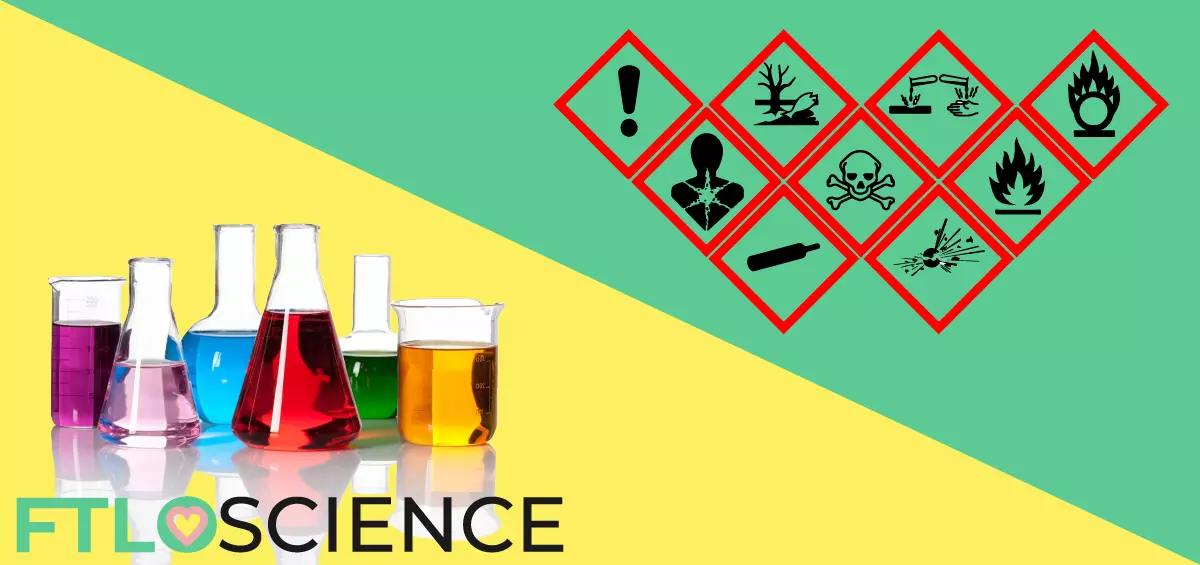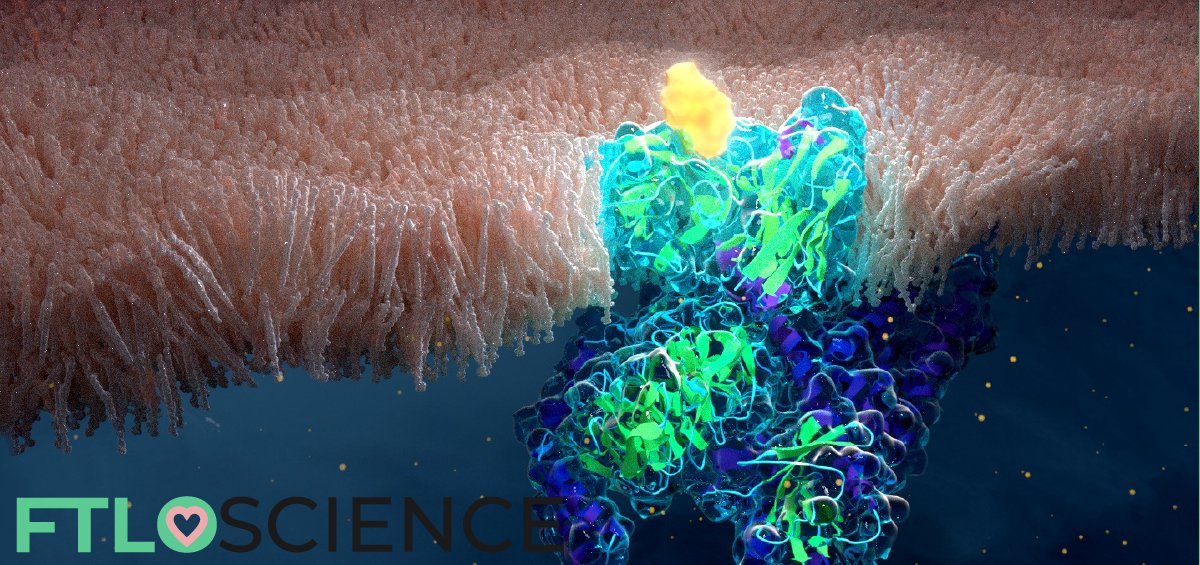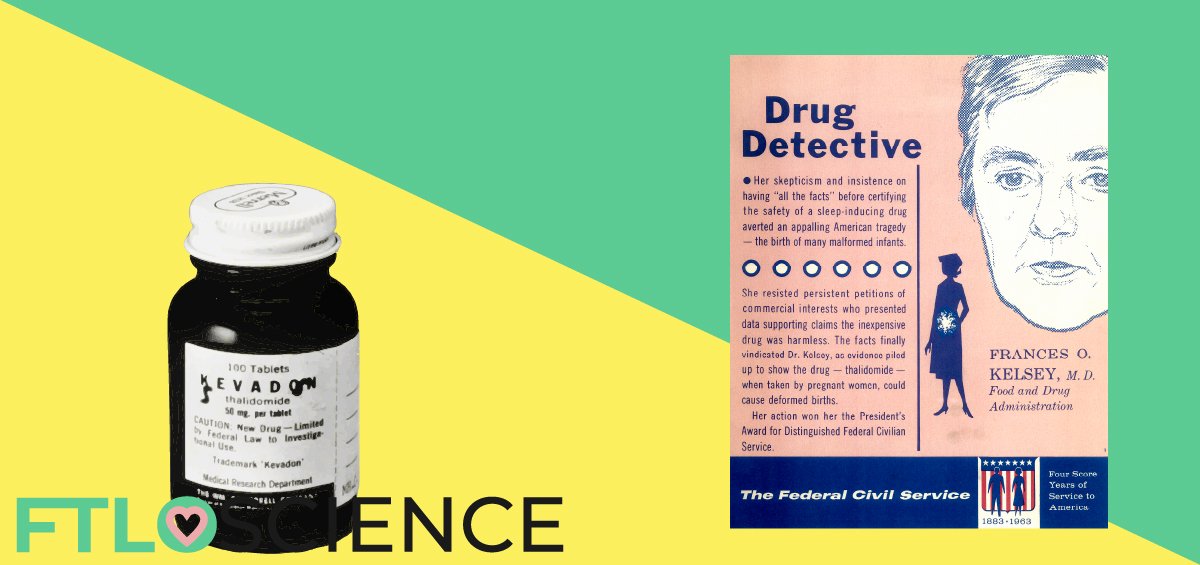Imagine going to a restaurant in a foreign country as a person with food allergies. How would you tell if the food was safe to eat? Sometimes, menu items have little pictures that show if a product contains peanuts, dairy, etc. GHS labels in the laboratory play the same role. This guide tells you what the symbols mean and how to handle each chemical group safely.
The Globally Harmonized System (GHS) for laboratory chemicals is a group of 9 symbols, each associated with a safety or health hazard. This globally recognized system helps us quickly identify risks without translation or interpretation. Chemicals can have multiple symbols labeled on them.
The Globally Harmonized System (GHS)
Below is an example of a complete GHS label required on all laboratory chemicals. You can find it stuck on the bottle or packaging (sometimes it’s tiny!). It tells us how to store, transport and use the chemical safely. In case of accidents, there is also a first aid statement and contact information.
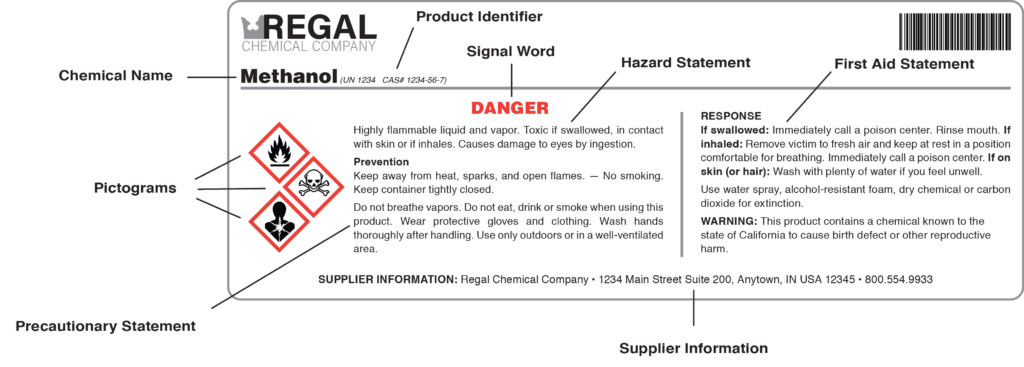
You will also notice the pictograms (or symbols) on the left, icons framed in a red diamond. These GHS hazard symbols tell us of the potential dangers of the chemical. They were designed to be globally recognized and understood, so no translation is needed.
This is important because chemicals can come from the other side of the world before reaching your lab. These symbols help everyone involved safely handle and transport the chemical, segregating different chemicals as required while knowing the risks of exposure.
Explaining GHS Symbols
Click on each GHS symbol to jump to their explanations below!
Health Hazard
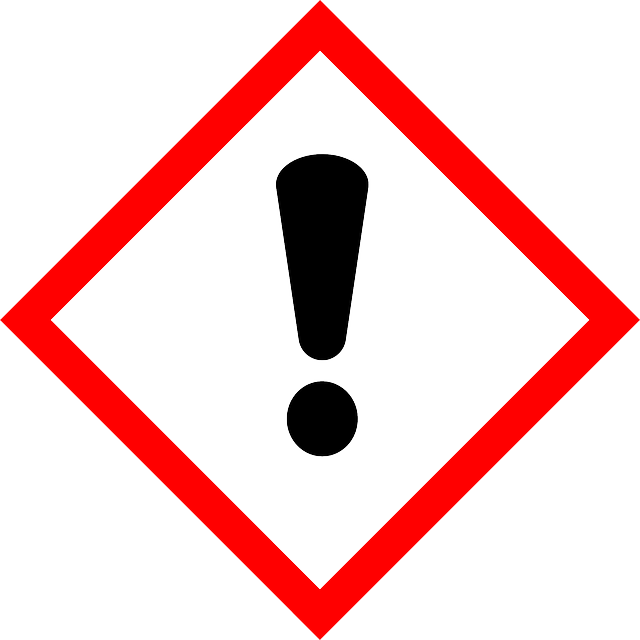
The health hazard GHS symbol is an exclamation mark, which is a little vague, but that’s because it encompasses a bunch of adverse effects This also means it is the most common symbol that we find on lab chemicals. Chemicals with this symbol carry the following risks:
- Skin irritant/allergen
- Eye irritant
- Harmful if inhaled
- Acute (short-term) toxicity
Examples: ethanol, acetone
Serious Health Hazard
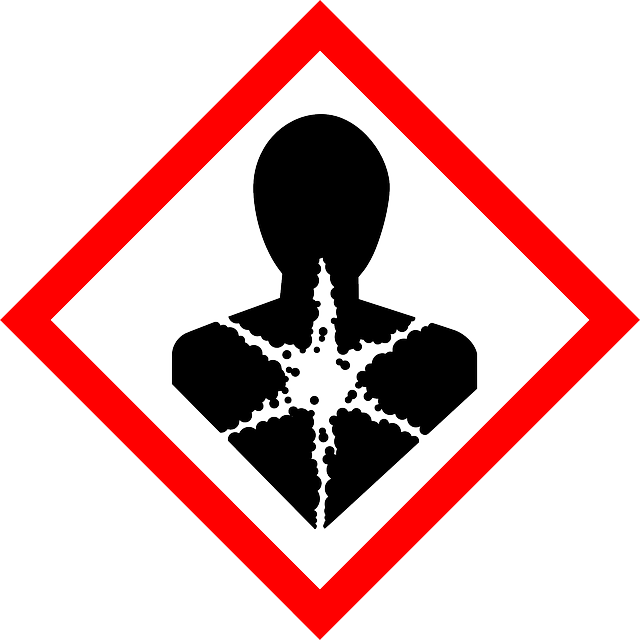
The difference between a health hazard and a serious health hazard is the severity of its effects on our bodies. Chemicals with this symbol can cause:
- Organ damage
- Cancer (carcinogen)
- Damage to DNA (mutagen)
- Toxicity to unborn children (teratogen)
Examples: methanol, chloroform
Environmental Hazard
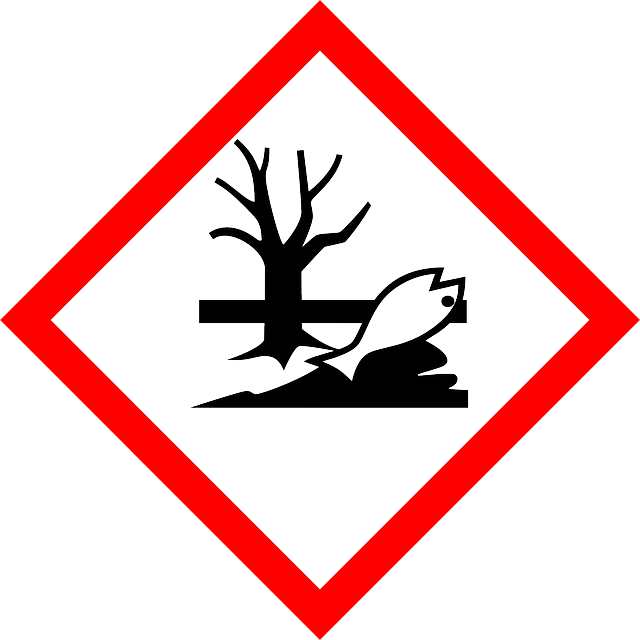
This symbol represents environmental hazards that are toxic to aquatic life (fish, algae, crustaceans, etc.) This also applies to chemicals that bioaccumulate in animals and plants.
Examples: mercury, lead
Poison

Poisons are another broad class of chemicals that have acute toxicity. These chemicals usually have a low LD50 value, which means ingesting a small amount can lead to severe symptoms or even death.
Examples: Ricin, potassium cyanide
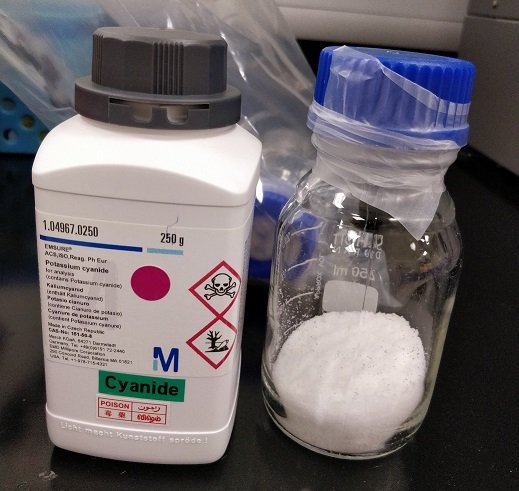
Corrosive

Corrosive chemicals are usually acids or bases that can corrode skin or metals. It’s important not to store acids and bases next to each other, as any spills or accidents might result in a reaction that produces gas and heat.
Examples: hydrochloric acid, sodium hydroxide
Flammable

Flammable substances are chemicals with low flash points. They combust at room temperature when ignited (by a spark, or buildup of static). It’s essential to store these chemicals in grounded storage units to prevent the build-up of static.
Examples: methane (gas), cyclohexane (liquid), lithium metal (solid)
Oxidizer
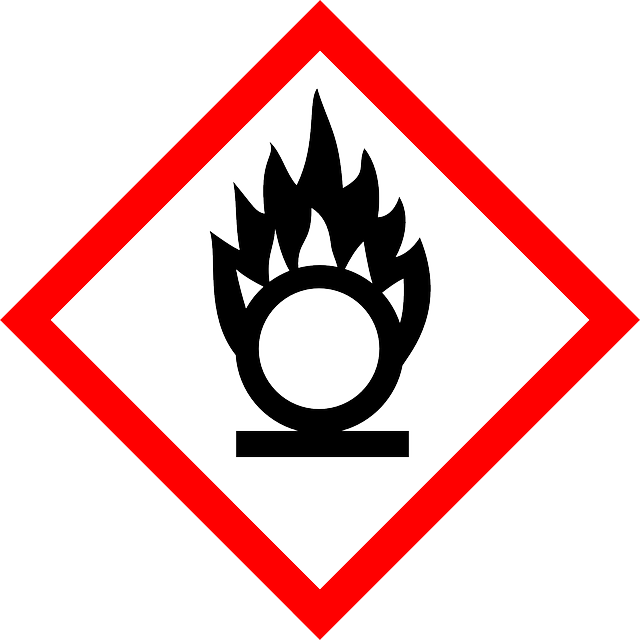
The oxidizer GHS symbol looks similar to the flammable symbol, which is strange, because the two classes of chemicals should never be stored together. Oxidizers (sometimes called oxidizing agents) transfer oxygen atoms to other chemicals, promoting their combustion.
Examples: oxygen gas, potassium nitrate
Gas Canister
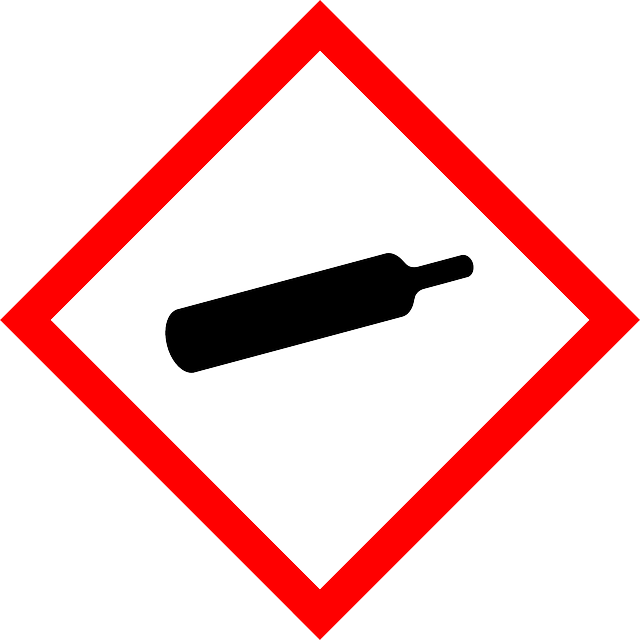
This symbol represents chemicals that are stored under compression, either high-pressure gas or cryogenic liquids. It’s important to store these upright and in secure locations away from heat sources.
Examples: acetylene, nitrogen gas canisters
Explosive
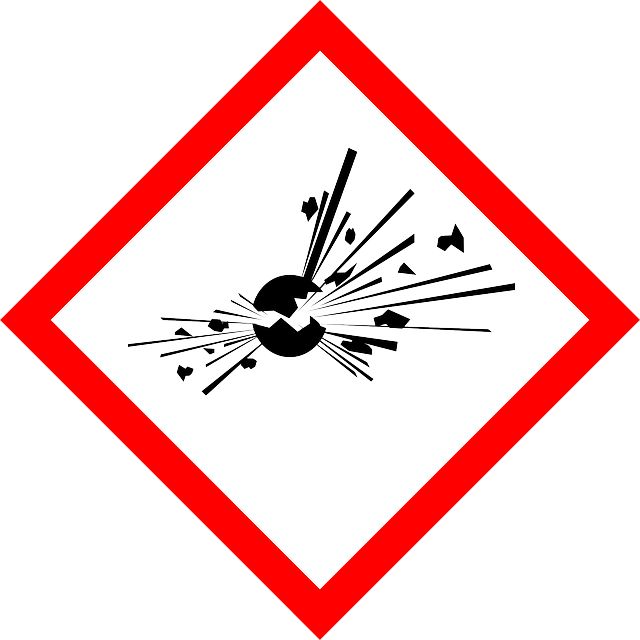
The GHS symbol for explosive chemicals is my personal favorite. Explosives are chemicals that are flammable, but release much more energy through detonation instead of combustion.
Examples: picric acid, nitroglycerin
Now you know how to classify all 9 GHS symbols labeled on laboratory chemicals! Suppose a reagent bottle doesn’t have these symbols (label has fallen off, non-commercial solution, etc.). In that case, you can look for the chemical’s MSDS (material safety data sheet), which contains more detailed explanations of its health effects and other handling precautions. It’s always a good idea to review the MSDS of any new chemical you bring into the lab!
About the Author

Sean is a consultant for clients in the pharmaceutical industry and is an associate lecturer at La Trobe University, where unfortunate undergrads are subject to his ramblings on chemistry and pharmacology.

